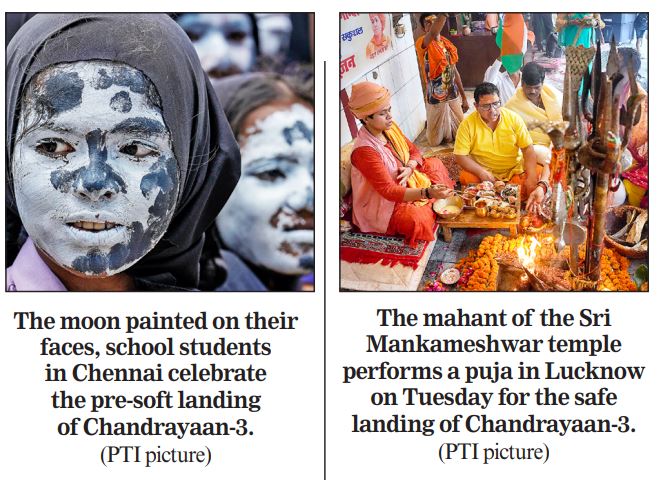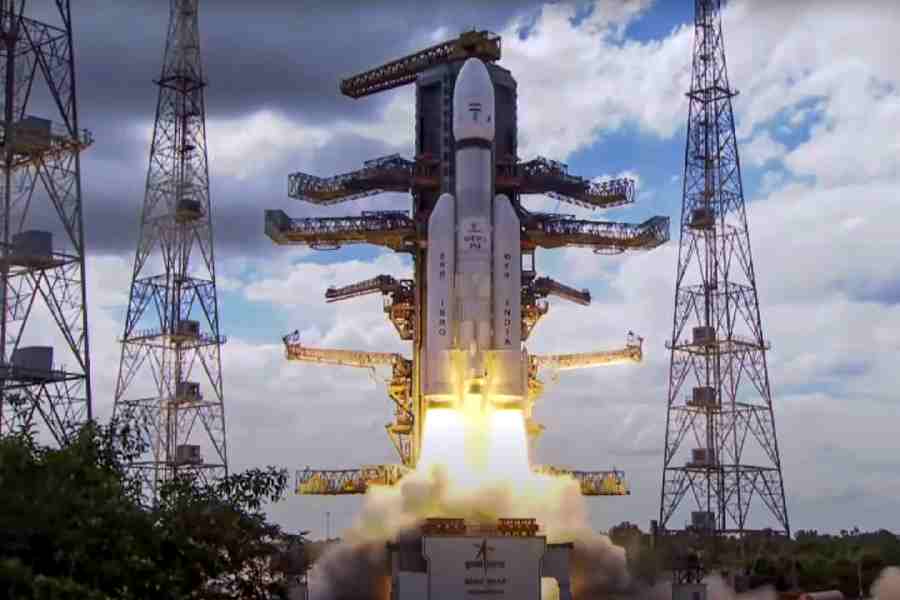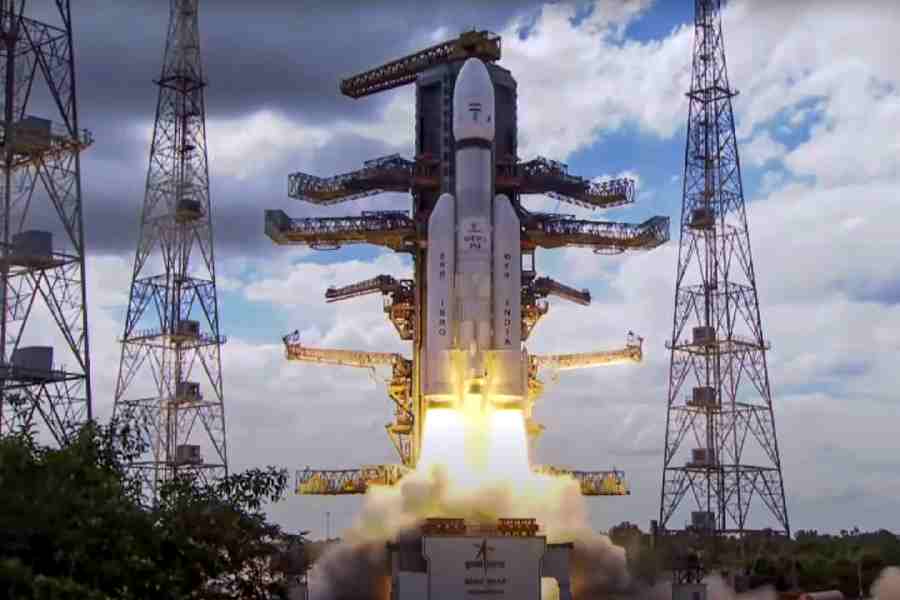The Chandrayaan-3 spacecraft’s lander module is set to begin its final descent on Wednesday, hoping to mark the 19th time in nearly 60 years that a human-made machine has achieved a soft lunar touchdown.
“The mission is on schedule. Systems are undergoing regular checks. Smooth sailing is continuing,” the Indian Space Research Organisation (Isro) said on Tuesday as ground control engineers in Bangalore monitored the spacecraft currently in a 25km by 134km orbit around the moon.
Isro has said it will livestream the landing attempt through its website and social media platforms starting 5.20pm on Wednesday and has invited schools and other educational institutions across the country to watch the event.
The lander’s descent is scheduled to start around 5.45pm Wednesday IST, two Isro officials told The Telegraph on Tuesday evening. However, Isro officials have hinted earlier that if a technical need emerges, they could push forward the landing attempt by a few days.
The decision on whether to go ahead will be taken “a few hours before” the scheduled start of descent, one of the officials said. If the landing attempt is postponed, the space agency will need to wait until the lander’s next pass over the candidate landing site, the official said.

The lander is scheduled to start its descent from an altitude of about 30km at which point its velocity will be 1.68km per second, Nilesh Desai, director of the Isro Space Application Centre, Ahmedabad, told PTI on Tuesday.
“Our focus will be on reducing that speed…. If we do not control that speed, there will be chances of a crash landing. If any health parameter (of the lander) is found abnormal on August 23, we will postpone the landing to August 27,” Desai told the news agency.
Spacecraft from Earth have made soft touchdowns on the moon only 18 times since the first landing by Russia’s Luna 9 in January 1966. The landings so far include four by Russian spacecraft, 11, including six crewed Apollo missions, by US spacecraft, and three from China.
A robotic lander named Beresheet from Israel crashed into the moon in April 2019, while Japan lost a lander named Ometonashi in November 2022, while another lander named Hakuto-R crashed into the moon in December 2022.
Chandrayaan-3’s landing attempt comes only days after Luna 25, Russia’s first lunar lander in 47 years, crashed onto the lunar surface on Sunday after an onboard emergency, underlining the challenges that the landing attempt poses even for experienced space agencies.
As it descends, two rocket engines on the Chandrayaan-3 lander will slow it down, while four smaller thruster engines will help maintain the lander’s orientation, an onboard computer controlling them for any deviations from expected performance as it approaches touchdown.
Isro chairman S. Somanath has said that mission planners have designed the lander for myriad classes of onboard failures, including sensor, engine, and algorithm failures, to build a spacecraft that will land at the required speed.
Chandrayaan-3, launched on July 15, is Isro’s third lunar spacecraft. Chandrayaan-1 launched in 2008 was a lunar orbiter that helped detect signatures of water on the moon. Chandrayaan-2 launched in 2019 was a lander mission but failures during its final descent caused it to crash into the moon.











